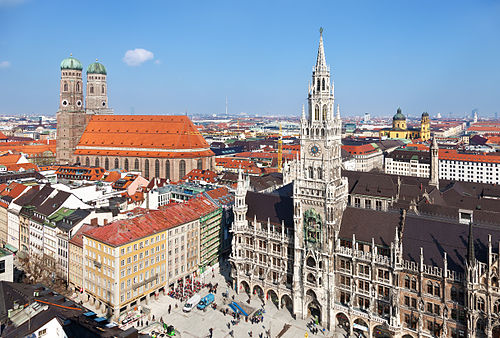Munich, the Bavarian capital known for its beer gardens and historic charm, has now earned another accolade: the most walkable city in the world. According to a recent study by Compare the Market AU, Munich has been crowned the planet’s most pedestrian-friendly destination — outperforming cities across Europe, Asia, and the Americas.
The study assessed cities based on a range of factors including trail access, safety, public transportation, cost, and the presence of car-free zones. Munich’s combination of high-quality urban planning, green mobility options, and strong infrastructure made it an easy front-runner.
Why Munich Walks Ahead of the Pack
At the heart of Munich’s success is a city layout that prioritizes people over cars. Nearly 86% of the population lives within one kilometer of a car-free zone, giving residents and visitors alike easy access to clean, safe, and walkable areas. The city boasts over 1,200 kilometers (750+ miles) of bike paths, many of which are fully separated from car traffic — encouraging both walking and cycling.
Though Munich’s public transport system ranks among the more expensive globally, the city’s exceptional urban safety scores (4th highest worldwide) and strong access to healthcare and education facilities (85% of residents live within 1 km of both) make it uniquely livable.
A city spokesperson once noted, “We’ve built Munich with the idea that walking and biking should not be secondary forms of transport — they should be primary.” And that philosophy seems to be working.
A City Designed for People, Not Just Cars
Munich’s commitment to sustainable, pedestrian-first planning has long been part of its urban policy. In recent years, the city has doubled down on efforts to reduce car dependency — implementing new car-free zones in the Altstadt (Old Town) and reconfiguring major public spaces like Marienplatz to enhance walkability.
The city also supports active mobility through initiatives like:
Radentscheid Munich, a citizen-driven campaign for expanded bike infrastructure
Shared mobility services, including e-scooters and bike rentals integrated with public transport apps
Green corridors and urban parks, which offer both ecological benefits and walkable routes
The result is a city that feels not just functional, but enjoyable to traverse — from cobblestoned historic quarters to modern neighborhoods filled with cafés, art, and green space.
A Benchmark for Other Cities Worldwide
The study highlights Munich’s holistic urban planning model — one that doesn’t just prioritize efficiency, but also well-being. It’s a city where walking is woven into daily life: from commuting to leisure, errands to exercise.
Compare the Market’s analysts cited Munich’s “balance between safety, accessibility, and urban connectivity” as key factors in its #1 ranking.
“While many cities struggle to retrofit their infrastructure, Munich has consistently invested in integrated solutions that prioritize pedestrians and cyclists,” the report stated.
Beyond the Rankings: What Travelers Should Know
For visitors, Munich’s walkability offers an immersive way to explore. Popular areas such as the English Garden, Viktualienmarkt, and the Isar River banks can all be experienced on foot — no vehicle required. The city’s architecture, seasonal festivals, and pedestrian-only markets like the Christmas Christkindlmarkt provide a distinctly human-scale experience.
Even first-time travelers will find navigation intuitive. Signage is clear, streets are safe, and nearly every metro or tram station connects to walking and bike paths. And thanks to Germany’s strong commitment to sustainability, many of Munich’s initiatives are aligned with the country’s national climate goals — making it not just a walkable city, but a responsible one.
The Bigger Picture: Europe Sets the Pace
While Munich topped the list, European cities dominated the top 10. Milan, Warsaw, Helsinki, and Paris followed close behind, reinforcing Europe’s leadership in pedestrian-focused urban design. Outside Europe, Tokyo was the only non-European city to make the top six.
Still, Munich remains the gold standard — a city that proves modern urban living doesn’t have to mean traffic jams and long commutes. Instead, it can be compact, clean, connected — and best experienced on foot.
Conclusion: Walk Munich, Walk the Future
In a world increasingly focused on sustainability, health, and livable cities, Munich’s walkability isn’t just a perk — it’s a blueprint. Whether you’re a resident strolling to a local bakery or a traveler exploring the historic center, walking through Munich is more than convenient — it’s a pleasure.
And in 2024, that makes it the best walking city on Earth.



